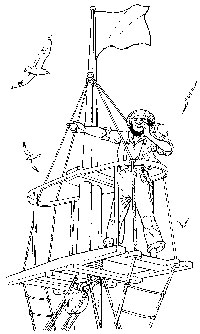F R O M T H E C R O W E ’ S N E S T
Nature’s Trump Card

Micromanaging by the Maine DMR and the maneuvering of scallop fishermen around tighter regulations may be the new face of scallop management.
Waiting for stocks to collapse as a signal to begin another ineffective management regime will no longer cut it. Close observers have known for a long time that a complicated resource needs a studied management plan. Fishermen will need to participate in the process and maneuver among changing policies to stay in the game.
Testing a resource to see how much effort it can take makes it difficult for fishermen to remain in the scallop fishery. While the three-zone system allows for resource differences between Casco Bay and Cobscook Bay, emergency closures wreck business plans.
Some of the current scallop management discussions sound eerily like groundfish management plans of the last decade. Reducing effort by reducing license holders to what is believed to be what the resource can handle now is effectively saying the resource is never going to get any better than it is right now.
Experimenting with efforts to restore scallop stocks is one thing, experimenting with who continues to make a living is something else. Preserving the scallop resource is not an endangered species project where everything is shut down in the interest of the target species. The goal is to preserve a fishery on a coast that needs more diverse fisheries. One of those species is the fisherman.
The DMR has put a lot of time and effort into the scallop resource since it bottomed out.
The owner operator goal, if it is based on the lobster fishing scale of owner/operator- small boat, one owner operator and a couple of crewmen is a reasonable control mechanism. Finding a way to preserve fishing rights for those who now have them should also be a part of a rebuilding plan.
More sophisticated and comprehensive research has not produced the definitive answer for scallop management. But it has revealed the need for a more complex, varied and delicate dance between harvest and recovery.
The harvesting of all wild species sustainably is keyed not to the capacity of harvest technology or the aspirations of managers, but to the nearly immutable reproduction and growth rates of each wild species. Nature holds the trump card in this game.
